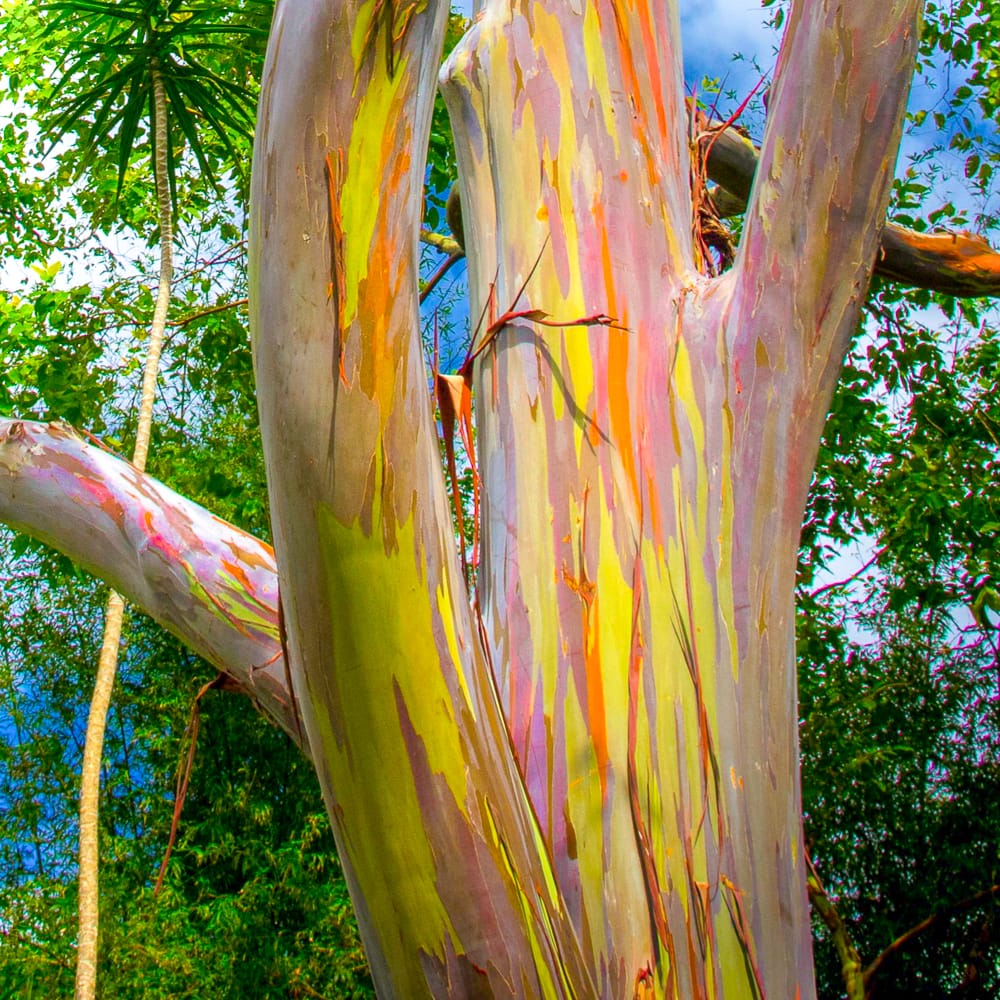
Dec 10 2024
Rainbow Eucalyptus: Living Masterpiece
In the tropical forests of the Philippines, Indonesia, and Papua New Guinea, a living work of art towers above the landscape.
The secret behind the rainbow eucalyptus’s striking colors lies in its bark. Unlike most trees that shed their bark irregularly, the rainbow eucalyptus peels off in patches throughout the year. As the outer layer is shed, the inner bark beneath is exposed, starting as a bright, lime-green color. Over time, the exposed layer matures and oxidizes, gradually transitioning through a spectrum of colors, including blue, purple, orange, and finally a deep red before it falls away. The continuous peeling and color-changing process create the tree’s iconic rainbow effect.
The vibrant colors are not just for show; they play a role in the tree’s survival. The smooth bark and constant peeling help the tree shed parasites, fungi, and lichen that might otherwise take hold. By keeping its surface clean and fresh, the rainbow eucalyptus ensures its growth is not hindered by harmful organisms. This self-renewing process also helps the tree thrive in the wet, humid climates of its native habitat.

Standing up to 250 feet tall in its native environment, the rainbow eucalyptus is one of the fastest-growing trees in the world. Its ability to grow quickly and adapt to tropical conditions has made it a popular choice for reforestation projects. The tree is also cultivated in non-native regions like Hawaii and Florida, where its colorful bark makes it a favorite among gardeners and landscape enthusiasts.
Beyond its visual appeal, the rainbow eucalyptus has practical uses. Its wood is valued for its strength and durability, often used in paper production and construction. Its multicolored trunk, ever-changing and vibrant, stands as a testament to the endless creativity of the natural world.
Learn more at University of Hawai’i at Mānoa. "Eucalyptus deglupta (Rainbow Eucalyptus)."